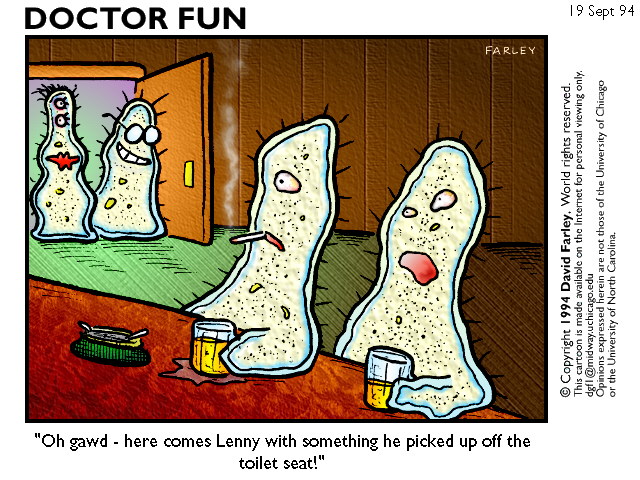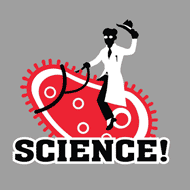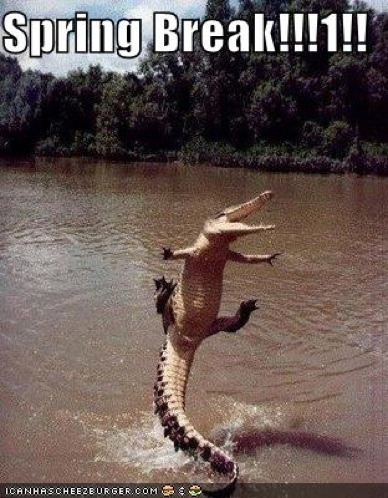Study Questions Exam I
Introduction and Nature of Science
1. How many described
(nonbacterial) species are there on Earth?
2. What percentage of
species have gone extinct?
3. What is Science?
4. What are the two general types
of science and how do they differ?
5. What is a scientific hypothesis?
6. Who was Henry Bates
7. What does the Batesian Mimicry
Hypothsis state?
8. Describe the experiment of
Pfennig et al., 2001 that tested Bates’ ideas.
9. Why do giraffes have long necks?
10. What is a scientific theory
and why is it so powerful?
11. Why are fields dealing with
supernatural phenomenon considered either unscientific or
pseudoscientific?
Unity, Diversity and Evolution
12. What are the 7
characteristics of Life?
13. Why is the Theory of Evolution
important to all biologists?
14. List the three domains
of life.
15. Starting with domain, list the
main taxomomic groups, from the largest (most inclusive) down to
species.
16. How do you write a genus
name? Species?
17. What are the multicellular
kingdoms (3)?
18. When did Darwin publish
"Origin of Species"?
19. What were Darwin's 5 main
observations?
20. What did Darwin infer
from those observations? (2 things)
21. What is meant by "unity within
the diversity of life"?
22. How did Darwin's finches get
to the Galapagos and why are there so many kinds?
23. Are there blood eating
birds?
24. Describe how
natural selection can cause a population to change.
25. What's a one-sentence
definition of evolution.
26. Do individuals evolve?
27. Can an individual undergo
adaptation?
28. What is Speciation?
29. What's the difference between
micro-and macroevolution?
30. What is the biological
species concept?
31. What is gene flow and
why does it matter?
32. Why is reproductive
isolation important?
33. T or F Galapagos
Tortoises are the same on all islands.
34. Why are the bones in our
arms the same bones as those in a chicken?
35. How does the Theory of
Evolution explain the unity of life (shared characteristics of life).
36. Why do all mammals
(whales, humans, bats etc.) have fur at some point in their lives?
37. What are 5 pre-zygotic
isolating mechanisms?
38. What are 3 post-zygotic
barriers?
39. What are the 2 types of
speciation and which one is more common?
40. How does allopatric
speciation work? Does it require natural selection?
41. What happens if two isolated
populations come back together and have NOT evolved reproductive
isolation?
42. What is a population?
43. T or F: Speciation may
involve 1 gene or many.
44. The two monkey flower
species in Schemske's experiment were reproductively isolated. How?
Tree Thinking
45. What is a phylogeny?
46. What two things did
Linnaeus give us?
47. What is a taxon?
48. Be able to recognize a
polytomy, ancestral node (branching point) and sister taxa on a
phylogeny.
49. Can phylogenies change?
50. Know the parts of a
phylogenetic tree and know how to read one!
51. What's a clade? What's a
monophyletic group? Why are they important in classification?
52. What is convergent
evolution?
53. What do convergent evolution
and common ancestry have in common?
54. The tree of life (of the
Domains) is largely based on what kind of data?
55. Draw the simple tree of
life. (simple branching pattern of 3 Domains)
56. What does a systematist do?
Archaea
57. What is the non-tree
alternative depiction of how the three domains evolved?
58. Why is it possible to say LUCA
may have been a community?
59. What kind of music does Laika
& the Cosmonauts play? (just kidding)
60. What types of
environments can extremophile Archaeans be found in?
61. What do Archaeans and
Eukaryotes have in common?
62. What do Archaeans and bacteria
have in common?
63, When did Archaea first
appear?
64. Who discovered them, when and
using what type of data?
65. Are all Archaeans
extremophiles?
66. What are the two major
groups of Archaea?
67. Where do they live (what is
each group called based on habitat),
how do they produce energy, and how do they affect other organisms (if
they do).
68. How can Archaea affect climate?
EXAM II Bacteria !
1. Describe Deinococcus
radiodurans.
2. Describe the three shapes that prokaryotes can have.
3. How is the cell wall of a bacterium unique with respect to the other
2 domains?
4. Describe how gram-staining works? Who developed it?
5. A bacteria stains purple it is negative or positive?
6. Describe and be able to label the two types of bacteria cell
walls.
7. What type of bacteria is endotoxic? What part makes up the
endotoxin?
8. What does penicillin attack?
9. What's a capsule and what is it good for?
10. What's a fimbria, what's a pilus?
11. What is taxis? Describe 2 types.
12. Label the flagella mechanism of a bacteria and describe how
it works.
13. What are two types of interior membranes that can be found in
some bacteria. What do they do?
14. Describe the two types of DNA in a bacterium.
15. How does plasmid cloning work?
16. What is binary fission?
17. bacterial generation times are about how long?
18. What's an endospore? How can you kill it!?
19. Describe Cooper and Lenski's experiment. Are the
bacterial individuals
getting stronger?
ASK A TUTOR WEBSITE (tutor available for THIS class):
http://www.uni.edu/unialc/read_learn/askatutor.html
20. Describe and compare conjugation (both plasmid and
chromosomal), transformation, transduction. What do these three things
accomplish?
21. What are the three ways that bacteria generate so much
genetic diversity?
22. About how many mutations occur in your E. coli fauna everyday?
23. What is the F-factor?
24. What is an R-plasmid?
25. What is an Hfr cell?
26. What are the 4 major nutritional modes? Describe them
and give one example of each.
27. Describe the three bacterial modes concerning oxygen
use/tolerance.
28. What is nitrogen fixation?
29. Give an exmple of a nitrogen fixing bacteria and where it lives.
30. What's a heterocyte?
31. What's a biofilm?
32. About how many bacterial species in a handful of soil?
33. What has been the impact of molecular systematics on microbiology?
34. What are the 5 major groups of bacteria?

35. From the chart:
(Yes or no)
Nuclear envelope?
Membrane-enclose dorganelles?
Peptidoglycan in cell walls?
Inhibited by streptomycin or chloramphenicol?
Circular chromosome?
Can grow in 100 deg. C?
36. What are the 5 major groups of bacteria?
37. What are the 5 subgroups of proteobacteria?
38. Where did you mitochondria come from?
39. Where did chloroplasts come from?
40. Why are alpha protobacteria important to plants (and us)?
41. Salmonella, Legionaire's disease, and cholora are all
examples of diseases cause by what type of Proteobacteria?
41. E. coli is a___________ type of Proteobacteria.
42. ______________ proteobacteria form fruiting bodies.
43. Chlamydia is the number 1 cause of ___________ and the #1
STD? Can it cause infertility?
44. Lyme disease and syphilis are caused by______________.
45. Cyanobacteria make energy by the process of
__________________.
46. Why are cyanobacteria considered so important?
47. What was the Great Oxygen Event? When did it happen?

48. Name 4 diseases caused by Gram Positive bacteria.
49. WHY are they gram POSITIVE?
50. Why are actinomycetes important?
51. ______are the smallest cells.
52. What roles do bactereia play in chemical cycling?
53. How can bacteria be beneficial to plants? 2 ways!
54. What are the three types of symbiotic relationships? Give an
example.
55. A disease causing bacteria is called a _____.
56. Describe how lyme disease is transmitted.
57. What is the difference between endotoxins and exotoxins?
Eukaryotic Diversity
58. What is a eukaryote?
59. What are the five major eukaryote groups?
60. What are the three nutritional strategies of eukaryotes?
61. Describe the three different sexular reproduction
cycles? What are the main differences and who does which?
62. Describe primary endosymbiosis of plastids. What two
groups arose this way?
63. Describe secondary endosymbiosis. What 3 groups arose
this way? How do we know it was secondary?
64. Why is protista a grade and not a clade? Why does it
matter?
65. What are the 3 groups within the Excavata?
66. Describe the characteristics of these three groups, give one
example of an organism (genus) from each excavate group and any
diseases that they may cause.
67. What basic properties do the excavates share?
68. If an excavate has a plastid, where did it originate?
69. Why don't all excavates have plastids?
70. What is the main distinguising feature of a Euglenozoan?
71. What two groups are make up the Euglenozoa?
72. What two diseases are cause by Trypanosoma infections?
73. What 2 groups make up the Chromalveolates?
74. What disnguishes alveolates? What is that for? : )
75. Dinoflagellates gain nutrition by either being_____________
or _____________.
76. Dinoflagellates release toxins and blooms may result
in_____________.
77. Malaria is caused by the apicomplexan, ___________________.
78. About how many people die from malaria each year?
79. T or F Humans have evolved in response to malaria?
80. Where do merozoites develop in your body?
Gametocytes?
81. Sporozoites develop within a vector, the ________________.
82. Ciliates have cilia and two types of nuclei, ______________
and ____________.
83. How do paramecia become recombiinant?
84. How do they reproduce?
85. Stramenopiles are characterized by what type/s of flagella?
86. Diatoms of skeletons made of hydrated _________.
87. Golden algae get their color from yellow and brown
____________.
88. Some golden algae are _______________ in addition to being
autotrophic.
89. An example of brown algae is ________.
90. Are brown algae (protists) multicellular?
91. What are the three parts of a brown algae and what do they do?
92. Oomycetes are commonly called __________molds.
93. The most famous outbreak of oomycetes caused the
___________________.
94. Forams and radiolarians are examples of __________.
95. What is a test (forams)?
96. T or F - most rhyzaria have some type of pseudopod?
97. 20% of all limestone is made of the tests of_____________.
1. How are archeaplastida different from plants?
2. Draw and label the entire clade for Plantae.
3. Why are red algae red?
4. What are red algae used for (by people)?
5. What's a chlorophyte?
6. Where do they live? 3 places.
7. Draw and label the life cycle of a Chlamydomonas.
8. Why are these dates important: 4.5 billion years ago (bya), 3.8 bya, 1.2 bya, 0.5 bya
9. What 4 morphological traits, and two genetic datasets support
the sister-taxa relationship of charophytes and land plants
(embryophytes)?
10. 4 reasons to move to shallow water from deep.
11. 2 challenges of land for plants.
12. _______________ in plants is analagous to the harder shell of a reptile.
13. Genetically speaking, why is a gametophyte a good thing for plants?
14. What are the big 4 unique traits of land plants?
15. Draw and label a simple diagram of alternatinig generations.
16. Why are gametes made via mitosis and spore via meiosis?
17. What's a cuticle?
18. What's a secondary plant compound and why do they make them?
19. Why are mycorrhizae important?

20. Compare and contrast archegonia and antheridia. How are they alike? How are they different?
21. What is a sporangium?
22. What are the differences between a spore and a gamete?
23. What is so special about an amical meristem?
24. Early fossil sores were not singular but in clumps of _________.
25. Why is vscular tisse important?
26. Draw a phylogeny using the following:
liverworts, hornworts, mosses, lycophytes, pterophytes, gymnosperms, angiosperms.
27. What 3 groups are the nonvascular land plants?
28. What 2 groups form the seedless vasular plants?
29. What 2 groups form the seed plants?
30. What's a seed?
31. What's a hepatophyte?
32. What's a anthocerophyte?
33. The ____________ is dominant in the nonvascular life-cycle.



